Besatzungen der ISS
![]()
ISS: Expedition 25 |
 |
 |
 |
alternatives Crewfoto |
![]()
Besatzung, Start- und Landedaten
| Nr. | Nation | Name | Vorname | Position | Raumschiff (Start) |
Startdatum | Startzeit | Raumschiff (Landung) |
Landedatum | Landezeit | Flugdauer | Erdorbits |
| 1 | Wheelock | Douglas Harry | ISS-CDR | Sojus TMA-19 | 15.06.2010 | 21:35:18,732 UTC | Sojus TMA-19 | 26.11.2010 | 04:46:53,0 UTC | 163d 07h 11m 34s | 2570 | |
| 2 | Kaleri | Alexander Jurjewitsch | Bordingenieur-1 | Sojus TMA-01M | 07.10.2010 | 23:10:54,810 UTC | Sojus TMA-01M | 16.03.2011 | 07:54:05,3 UTC | 159d 08h 43m 10s | 2509 | |
| 3 | Skripotschka | Oleg Iwanowitsch | Bordingenieur-2 | Sojus TMA-01M | 07.10.2010 | 23:10:54,810 UTC | Sojus TMA-01M | 16.03.2011 | 07:54:05,3 UTC | 159d 08h 43m 10s | 2509 | |
| 4 | Kelly | Scott Joseph | Flugingenieur-3 | Sojus TMA-01M | 07.10.2010 | 23:10:54,810 UTC | Sojus TMA-01M | 16.03.2011 | 07:54:05,3 UTC | 159d 08h 43m 10s | 2509 | |
| 5 | Jurtschichin | Fjodor Nikolajewitsch | Bordingenieur-5 | Sojus TMA-19 | 15.06.2010 | 21:35:18,732 UTC | Sojus TMA-19 | 26.11.2010 | 04:46:53,0 UTC | 163d 07h 11m 34s | 2570 | |
| 6 | Walker | Shannon | Flugingenieurin-6 | Sojus TMA-19 | 15.06.2010 | 21:35:18,732 UTC | Sojus TMA-19 | 26.11.2010 | 04:46:53,0 UTC | 163d 07h 11m 34s | 2570 |
inoffizielle Ersatzmannschaft
| Nr. | Nation | Name | Vorname | Position |
| 1 | Coleman | Catherine Grace "Cady" | ISS-CDR | |
| 4 | Wolkow | Sergej Alexandrowitsch | Bordingenieur | |
| 5 | Kononenko | Oleg Dmitrijewitsch | Bordingenieur | |
| 6 | Garan | Ronald John, Jr. | Flugingenieur | |
| 2 | Kondratjew | Dmitri Jurjewitsch | Bordingenieur | |
| 3 | Nespoli | Paolo Angelo | Flugingenieur |
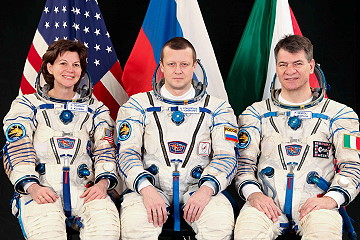 |
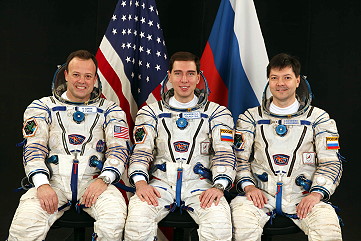 |
 |
Expeditionsverlauf
|
Start vom Kosmodrom Baikonur (Alexander
Kaleri, Oleg
Skripotschka und Scott
Kelly
mit Sojus
TMA-01M). Fjodor
Jurtschichin, Shannon
Walker und Douglas
Wheelock waren seit dem 17. Juni 2010 an Bord der Raumstation
(Ankunft mit Sojus TMA-19). Die ISS Expedition 25 begann mit der Abkopplung des russischen Raumschiffs Sojus TMA-18 am 25. September 2010 um 02:02:12 UTC, das die vorhergehende Stationsbesatzung (Alexander Skworzow, Michail Kornijenko und Tracy Caldwell-Dyson) zurück zur Erde brachte. Am 10. Oktober 2010 wurde die Besatzung der ISS mit der Ankunft von Sojus TMA-01M wieder auf sechs Personen aufgestockt. Zur Besatzung gehörten die Russen Alexander Kaleri, Oleg Skripotschka sowie der amerikanische Astronaut Scott Kelly. Der unbemannte russische Frachter Progress M-08M legte am 30. Oktober 2010 um 16:36 UTC an der Internationalen Raumstation an. Er war am 27. Oktober 2010 um 15:11:50 UTC vom Kosmodrom Baikonur gestartet. Das Transport-Raumschiff brachte 2,5 Tonnen Versorgungs- und Ausrüstungsgegenstände einschließlich Wasser, Treibstoff, Sauerstoff und Hardware für die Molnija-Gamma und Coulomb Crystal Experimente zur Stammbesatzung. Am 24. Januar 2011 um 00:40 UTC koppelte Progress M-08M wieder ab. Der Frachter wurde kontrolliert zum Absturz gebracht und verglühte am gleichen Tag über dem Pazifischen Ozean. Die einzige EVA während dieser Expedition erfolgte durch Fjodor Jurtschichin und Oleg Skripotschka am 15. November 2010 (6h 27m) zur Installation einer Mehrzweck-Arbeitsplattform an Steuerbord des Swesda Service Moduls längs der Sektion, Reinigung der Hitzeschutz-Abdeckung rund um die Ventile des Elektron Sauerstoff-Generators und Umsetzen einer Fernsehkamera von einem Ende des Rasswet-Andockknotens zu einem anderen Knoten (wegen nicht passender Anschlüsse fehlgeschlagen). Nach der Übergabe des Kommandos über die Internationale Raumstation von dem amerikanischen Astronauten Douglas Wheelock an den amerikanischen Astronauten Scott Kelly legte das Raumschiff Sojus TMA-19 am 26. November 2010 um 01:23:13 UTC mit Fjodor Jurtschichin, Shannon Walker und Douglas Wheelock an Bord von der Station ab. Die Expedition 25 der ISS war damit beendet und es begann die ISS Expedition 26. Während ihres Aufenthaltes an Bord der ISS führten die Crews der Expeditionen 25 / 26 folgende wissenschaftliche Experimente durch (vollständige Auflistung): 3D-Space (Mental Representation of Spatial Cues During Space Flight), ALTEA-Dosi (Anomalous Long Term Effects in Astronauts' - Dosimetry), ALTEA-Shield (Anomalous Long Term Effects in Astronauts' Central Nervous System - Shield), ARISS (Amateur Radio on the International Space Station), Bar (Choice and Development of Methods and Instruments to Detect the Location of a Loss of Pressurization of a Module on ISS), BCAT-5-3D-Melt (Binary Colloidal Alloy Test - 5: Three-Dimensional Melt), BCAT-5-Compete (Binary Colloidal Alloy Test - 5: Compete), BCAT-5-PhaseSep (Binary Colloidal Alloy Test-5: Phase Separation), BCAT-5-Seeded Growth (Binary Colloidal Alloy Test - 5: Seeded Growth), BCAT-6-Colloidal Disks (Binary Colloidal Alloy Test - 6 - Colloidal Disks), BCAT-6-Phase Separation (Binary Colloidal Alloy Test - 6 - Phase Separation), BCAT-6-PS-DNA (Binary Colloidal Alloy Test - 6: Polystyrene - Deoxyribonucleic Acid), BCAT-6-Seeded Growth (Binary Colloidal Alloy Test - 6: Seeded Growth), Biodegradation (Initial stage of Biodegradation and Biodeterioration in Space), Biological Rhythms (The Effect of Long-term Microgravity Exposure on Cardiac Autonomic Function by Analyzing 24-hours Electrocardiogram), Bisphosphonates (Bisphosphonates as a Countermeasure to Space Flight Induced Bone Loss), CCF (Capillary Channel Flow), CEO (Crew Earth Observations), CFE-2 (Capillary Flow Experiment - 2), CFS-A (Growth and Survival of Colored Fungi in Space), CVB (Constrained Vapor Bubble), DECLIC-ALI (DEvice for the study of Critical LIquids and Crystallization - Alice Like Insert), DECLIC-DSI (DEvice for the study of Critical LIquids and Crystallization - Directional Solidification Insert), DOSIS-DOBIES (Dose Distribution Inside ISS - Dosimetry for Biological Experiments in Space), DTN (Disruption Tolerant Networking for Space Operations), EarthKAM (Earth Knowledge Acquired by Middle School Students), EKE (Assessment of Endurance Capacity by Gas Exchange and Heart Rate Kinetics During Physical Training), EPO-Demos (Education Payload Operation - Demonstrations), FLEX (Flame Extinguishment Experiment), FLEX-2 (Flame Extinguishment Experiment - 2), Functional Task Test (Physiological Factors Contributing to Changes in Postflight Functional Performance), Hair (Biomedical Analyses of Human Hair Exposed to a Long-term Space Flight), HREP-HICO (HICO and RAIDS Experiment Payload - Hyperspectral Imager for the Coastal Ocean), HREP-RAIDS (HICO and RAIDS Experiment Payload - Remote Atmospheric and Ionospheric Detection System (RAIDS)), HydroTropi (Hydrotropism and Auxin-Inducible Gene expression in Roots Grown Under Microgravity Conditions), Hypersole (Cutaneous Hypersensitivity and Balance Control in Humans), Impuls (Impulse), Integrated Cardiovascular (Cardiac Atrophy and Diastolic Dysfunction During and After Long Duration Spaceflight: Functional Consequences for Orthostatic Intolerance, Exercise Capability and Risk for Cardiac Arrhythmias), Integrated Immune (Validation of Procedures for Monitoring Crewmember Immune Function), ISS Ham Radio (International Space Station Ham Radio), Izgib (Effect of Performance of Flight and Science Activities on the Function of On-Orbit Systems on ISS (Mathematical Model)), JAXA EPO 6 (Japan Aerospace Exploration Agency Education Payload Observation 6), Kids In Micro-g-2 (Kids In Microgravity-2 (2010-2011)), Kontur (Development of a System of Supervisory Control Over the Internet of the Robotic Manipulator in the Russian Segment of ISS), Kristallizator (Crystalization of Biological Macromolecules and Generation of Biocrystal Film in the Conditions of Microgravity), Lactolen (Influence of Factors of Space Flight on Lactolen Producer Strains), MABE (Microheater Array Boiling Experiment), MAI-75 (Space Devices and Modern Technology for Personal Communication), Matryeshka-R (Matryeshka-R), MAUI (Maui Analysis of Upper Atmospheric Injections), MAXI (Monitor of All-sky X-ray Image), MISSE-7 (Materials International Space Station Experiment - 7), Mouse Immunology-2 (Effect of Space Flight on Innate Immunity to Respiratory Viral Infections), Myco-2 (Mycological Evaluation of Crew Exposure to ISS Ambient Air - 2), NanoRacks-CubeLabs Module-10 (NanoRacks-CubeLabs_Module-10), NanoRacks-CubeLabs Module-1 and -3 (NanoRacks-CubeLabs Module-1 and -3), NanoRacks-CubeLabs Module-9 (NanoRacks-CubeLabs Module-9), Neurospat (Effect of Gravitational Context on EEG Dynamics: A Study of Spatial Cognition, Novelty Processing and Sensorimotor Integration), NLP-Cells-6 (National Laboratory Pathfinder - Cells - 6: Jatropha - 3), NLP-Vaccine-MRSA (National Laboratory Pathfinder - Vaccine - Methicillin-resistant Staphylococcus aureus), Nutrition (Nutritional Status Assessment), Otolith (Otolith Assessment During Postflight Re-adaptation), PACE (Preliminary Advanced Colloids Experiment: 100X Oil Test Target), PACE-LMM-Bio (Preliminary Advanced Colloids Experiment - Light Microscopy Module: Biological Samples), PADIAC (PAthway DIfferent ACtivators), Passages (Scaling Body-Related Actions in the Absence of Gravity), Photosynth (Photosynth™ Three-Dimensional Modeling of ISS Interior and Exterior), Pilot (Individual Characteristics of Psychophysiological Regulatory Status and Reliaility of Professional Activities of Cosmonauts in Long Duration Space Flight), Plasma Crystal (Dusty and Liquid Plasma Crystals in Conditions of Microgravity), Pro K (Dietary Intake Can Predict and Protect Against Changes in Bone Metabolism during Spaceflight and Recovery), Radioskaf (Creation of Preparation and Launch in the Prcess of Mini -Satellites), RAMBO-2 (Ram Burn Observations - 2), Reaction Self Test (Psychomotor Vigilance Self Test on the International Space Station), Relaksatia (Processes of Relaxation in the Ultraviolet Band Spectrum by High Velocity Interaction of Exhaust Products on ISS), Repository (National Aeronautics and Space Administration Biological Specimen Repository), Rusalka (Development of Methods to Determine the Carbon Dioxide and Methane (Greehouse Gases) Content in the Earths Atmosphere from On-Board ISS), SEDA-AP (Space Environment Data Acquisition Equipment - Attached Payload), SEITE (Shuttle Exhaust Ion Turbulence Experiments), SIMPLEX (Shuttle Ionospheric Modification with Pulsed Localized Exhaust Experiments), Sleep-Long (Sleep-Wake Actigraphy and Light Exposure During Spaceflight-Long), Sleep-Short (Sleep-Wake Actigraphy and Light Exposure During Spaceflight-Short), SMILES (Superconducting Submillimeter-Wave Limb-Emission Sounder), SNFM (Serial Network Flow Monitor), SODI-Colloid (Selectable Optical Diagnostics Instrument - Aggregation of Colloidal Solutions), Solar-SOLACES (Sun Monitoring on the External Payload Facility of Columbus - SOLar Auto-Calibrating EUV/UV Spectrophotometers), Solar-SOLSPEC (Sun Monitoring on the External Payload Facility of Columbus -Sun Monitoring on the External Payload Facility of Columbus -SOLar SPECtral Irradiance Measurements), SOLO (SOdium LOading in Microgravity), Sonokard (Physiological Functions (cardio-respiratory) of Humans Using Contactless Methods During Sleep in Long Duration Space Flight), SPHERES (Synchronized Position Hold, Engage, Reorient, Experimental Satellites), SPHERES-Zero-Robotics (Synchronized Position Hold, Engage, Reorient, Experimental Satellites-Zero-Robotics), Spinal Elongation (Spinal Elongation and its Effects on Seated Height in a Microgravity Environment), Sreda (Examination of the Features of IS as an Environment for Conducting Research), Ten'-Mayak (Study of Transmit/Receive Radio Signal Conditions in the Russian Segment of ISS Using the World-Wide Ham Radio Network), Thermolab (Thermoregulation in Humans During Long-Term Spaceflight), Tipologia (Study of the Typological Characteristis of ISS Crew Operators Activity at the Stages of Long Term Space Flight), Uragan (Hurricane: Experimental Development of Groundbased System of Monitoring and Predicting the Progression of a Naturally Occurring Technogenic Catastrophe), Vascular (Cardiovascular Health Consequences of Long-Duration Space Flight), VCAM (Vehicle Cabin Atmosphere Monitor), Vektor-T (Study of a High Precision System for Prediction Motion of ISS), Vessel ID System (Vessel ID System), Vessel Imaging (Vascular Echography), VO2max (Evaluation of Maximal Oxygen Uptake and Submaximal Estimates of VO2max Before, During, and After Long Duration International Space Station Missions), Vzaimodeystviye (Interactions: Monitoring of Space Crew Interactions During Extended Space Flight), Zag (Ambiguous Tilt and Translation Motion Cues After Space Flight). |
EVA-Daten
| Name | Beginn | Ende | Dauer | Mission | Schleuse | Anzug | |
| EVA | Skripotschka, Oleg | 15.11.2010, 14:5? UTC | 15.11.2010, 23:2? UTC | 6h 27m | ISS-25 | ISS - Pirs | Orlan-MK Nr. 4 |
| EVA | Jurtschichin, Fjodor | 15.11.2010, 14:5? UTC | 15.11.2010, 23:2? UTC | 6h 27m | ISS-25 | ISS - Pirs | Orlan-MK Nr. 5 |
Aufbau der ISS
 |
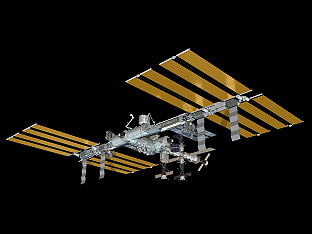 |
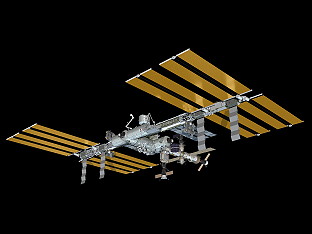 |
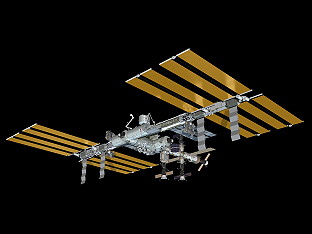 |
Fotos
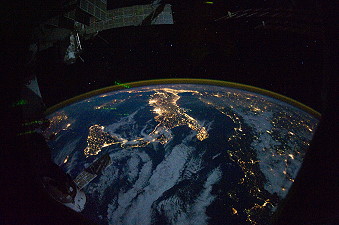 |
 |
 |
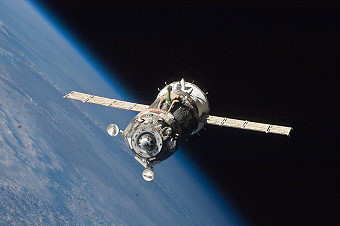 |
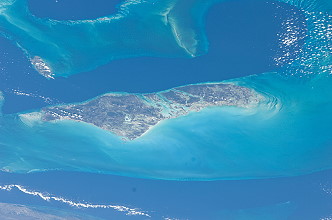 |
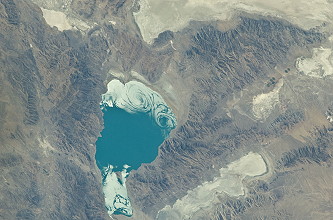 |
 |
 |
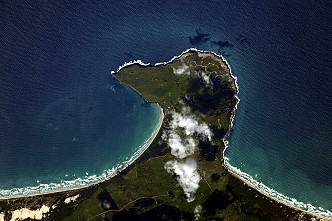 |
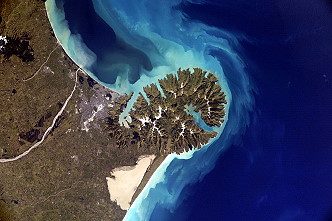 |
 |
 |
mehr Fotos Erdbeobachtung |
|
mehr EVA-Fotos |
|
mehr Fotos von Bord der ISS |
|
| © | 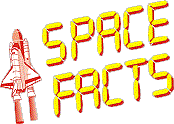 |
Letztes Update am 10. November 2023.  |
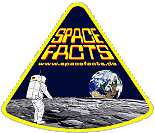 |